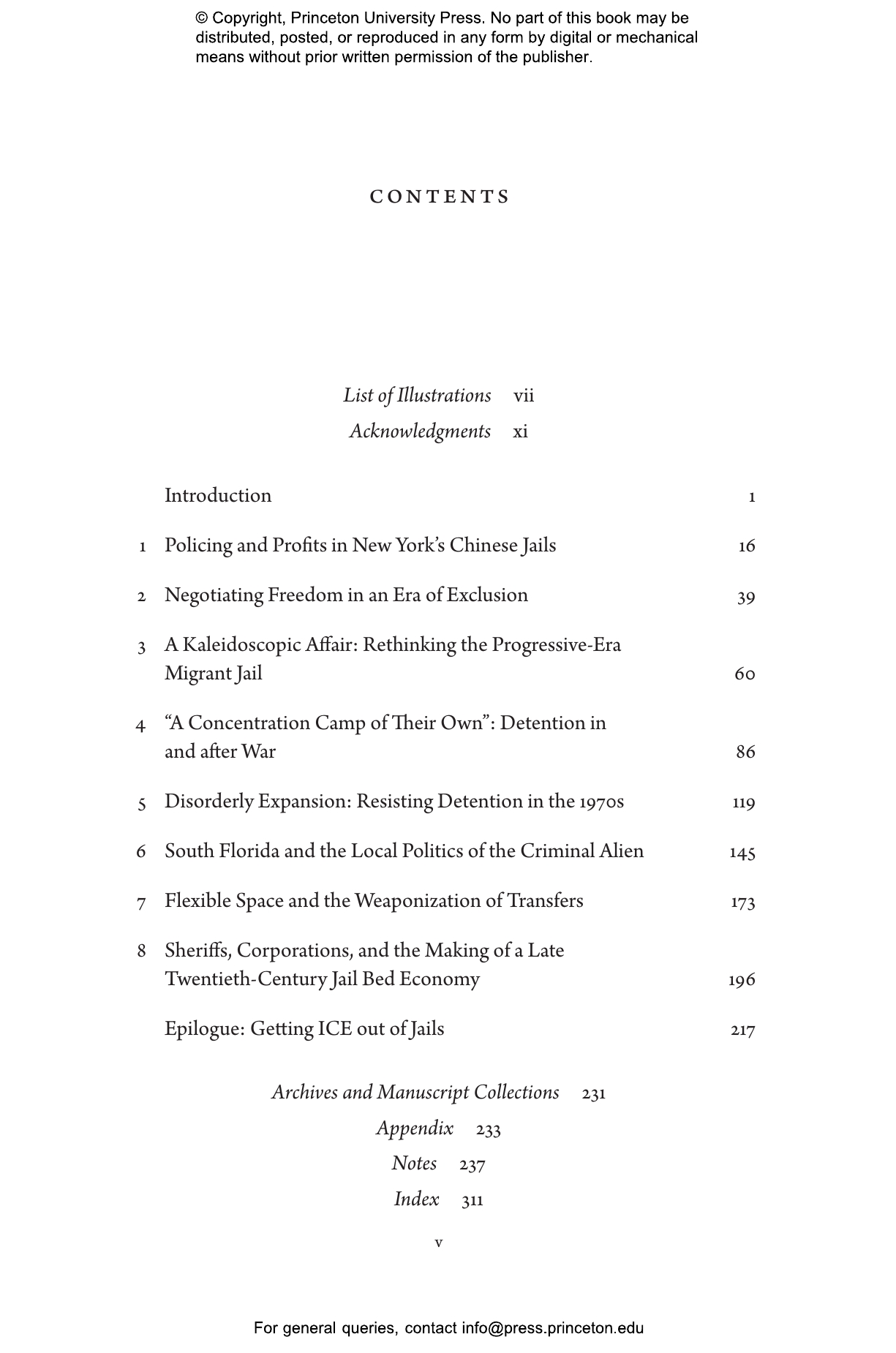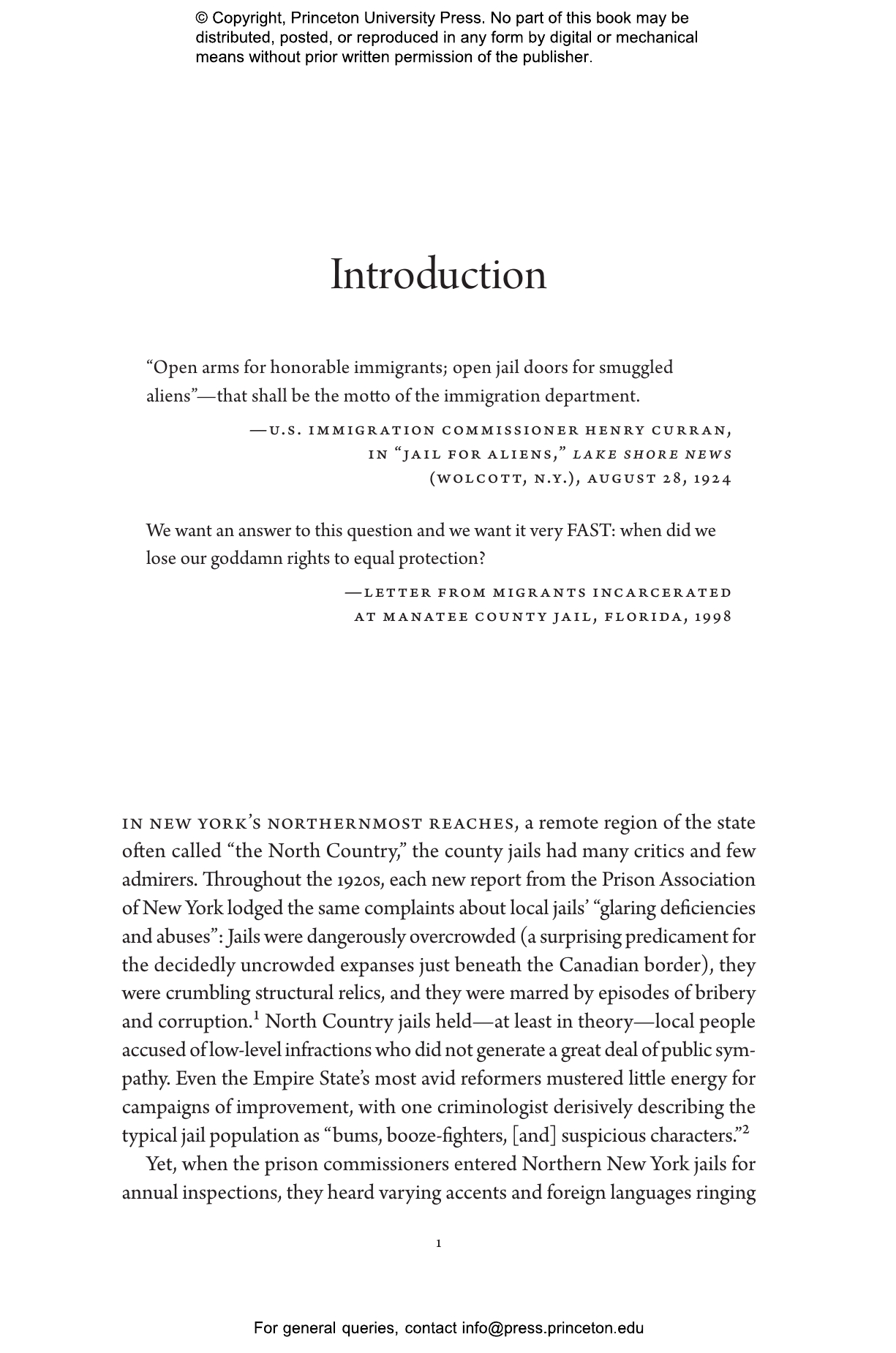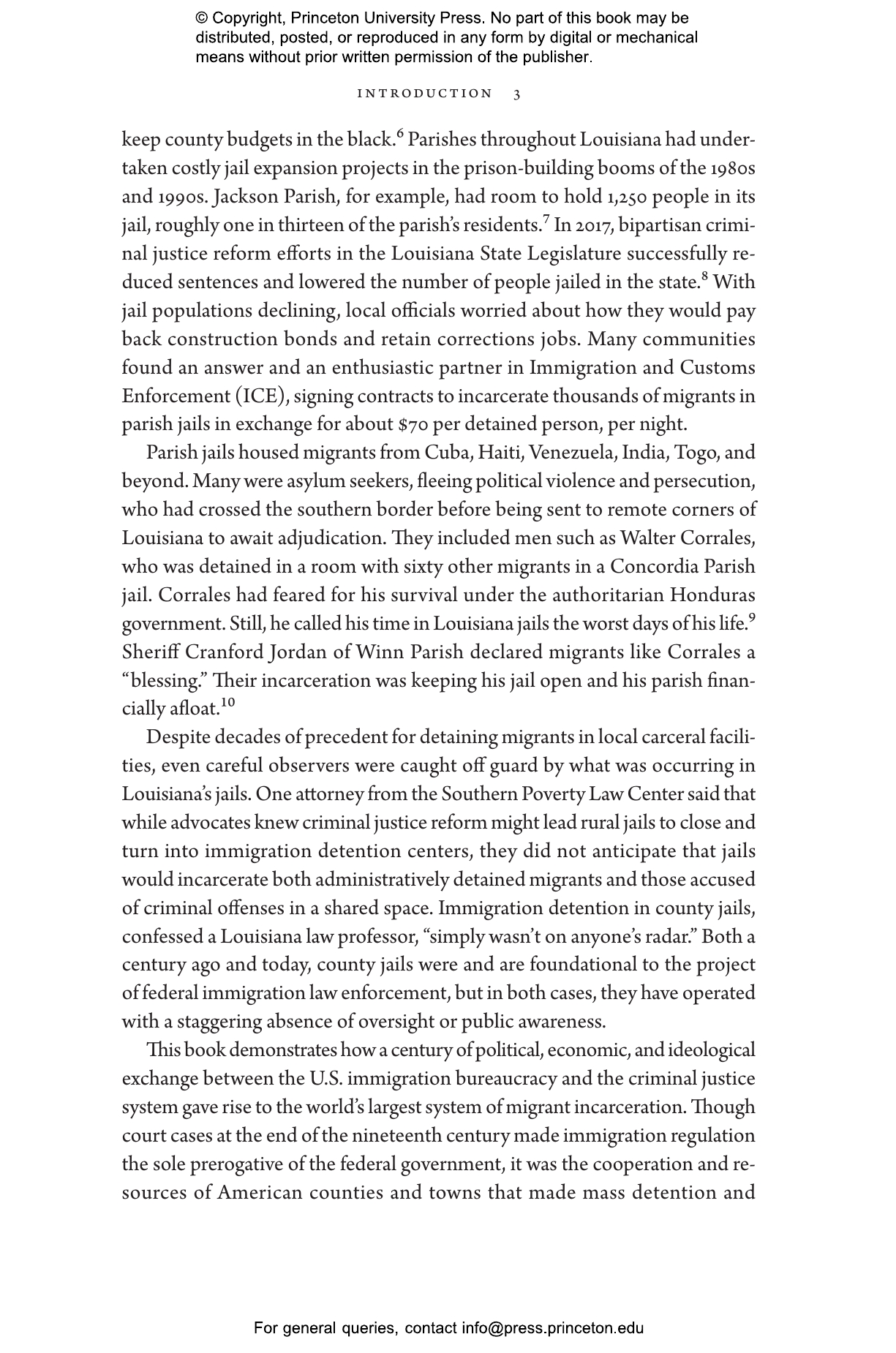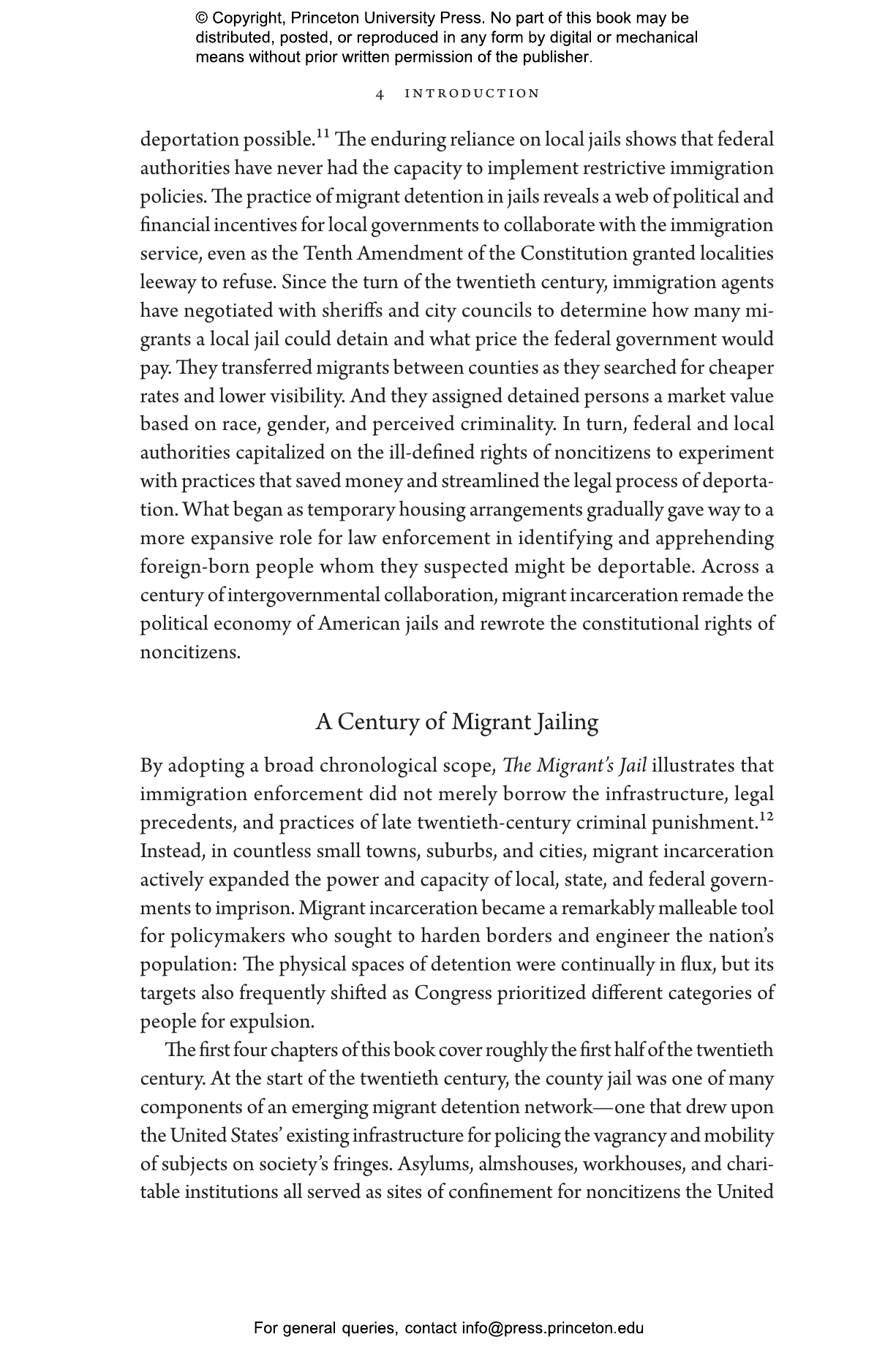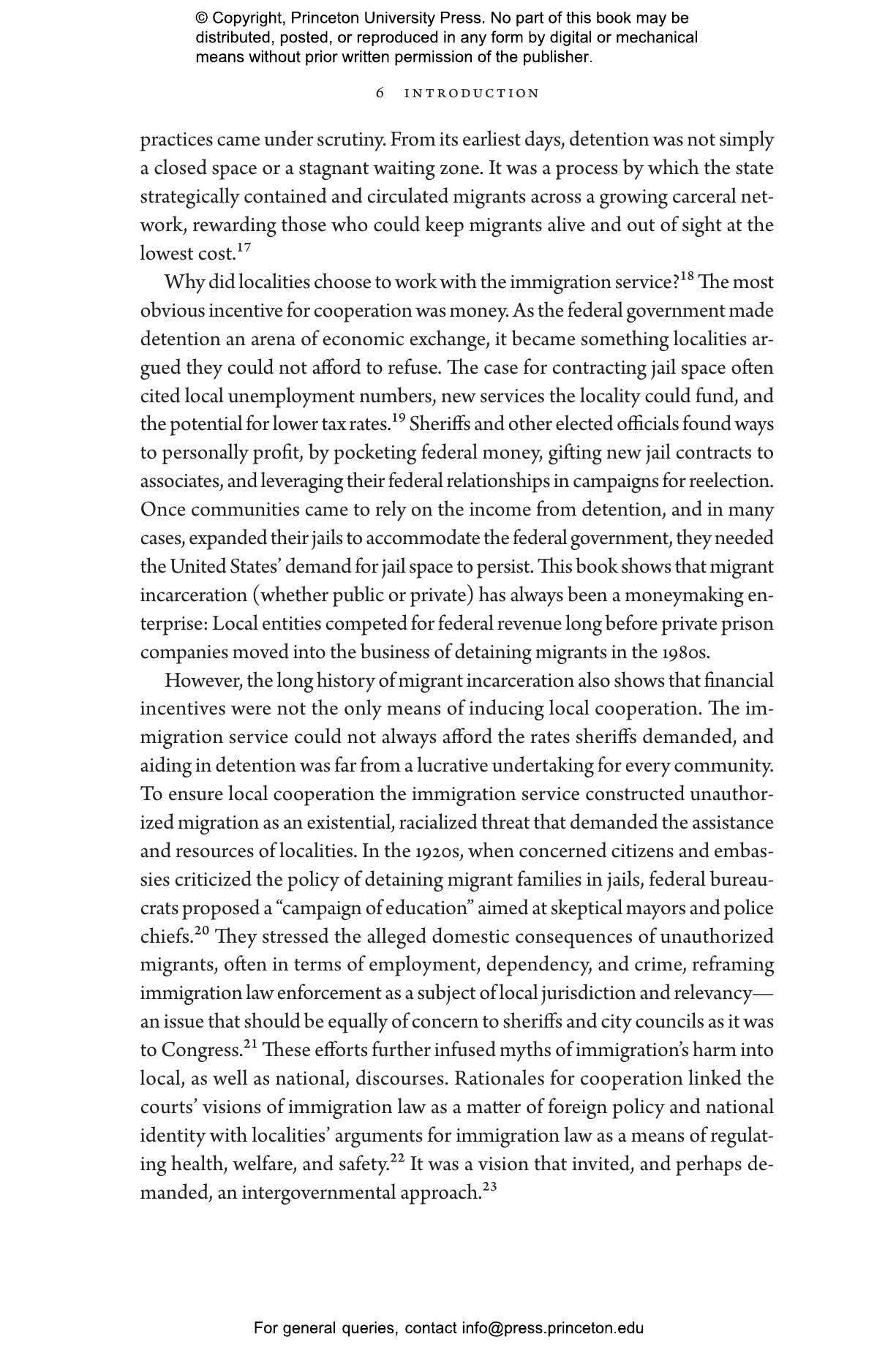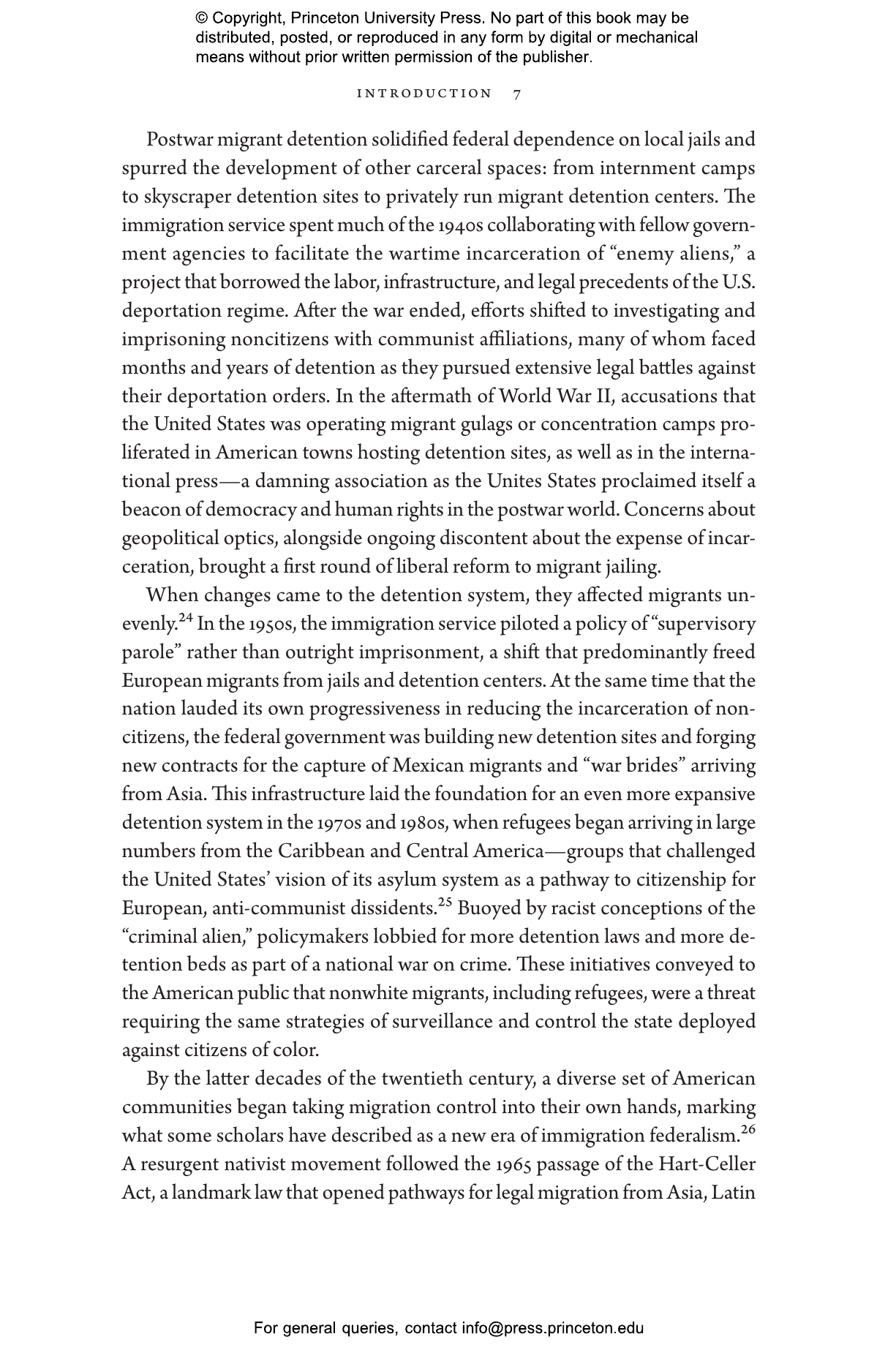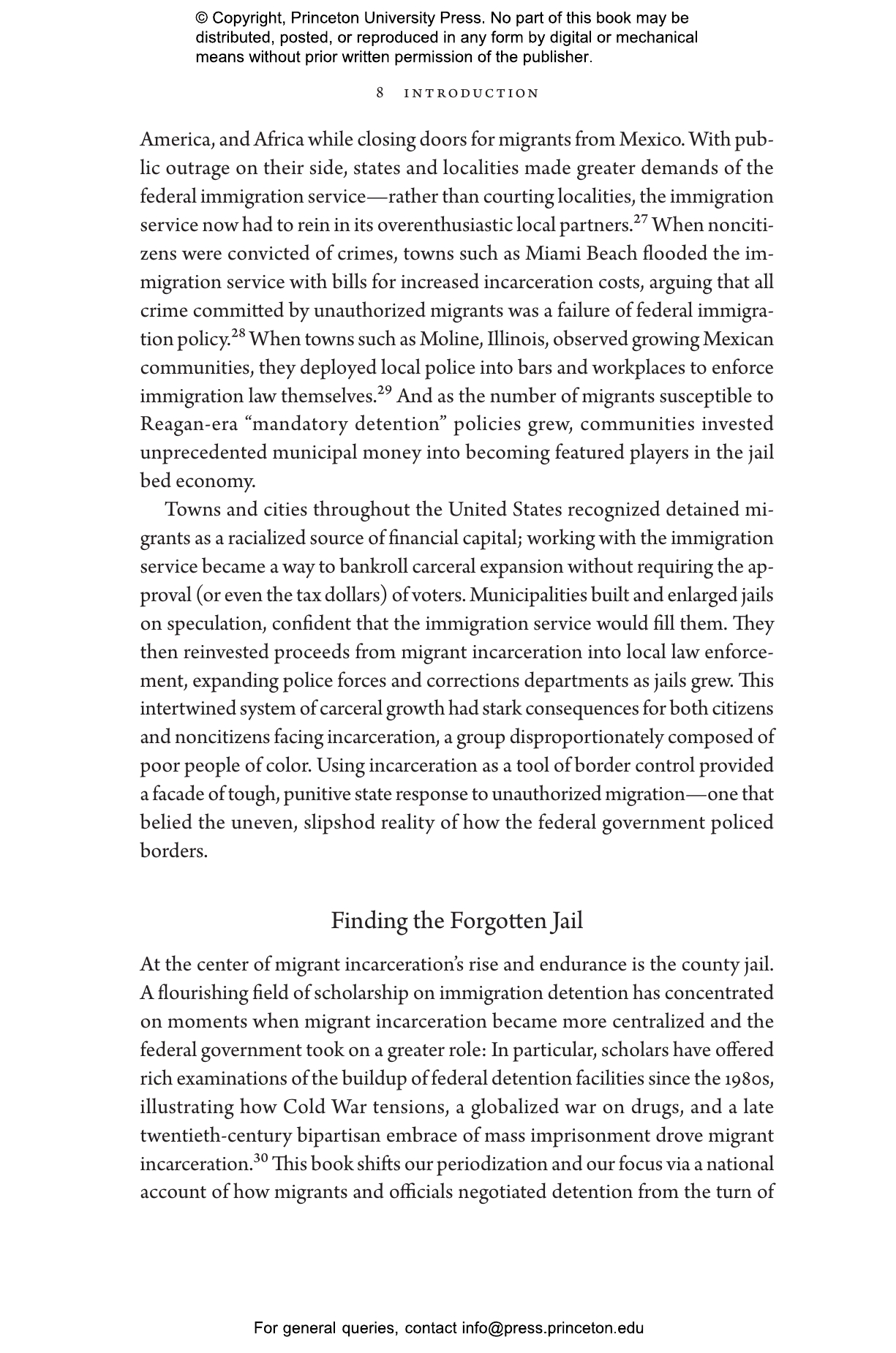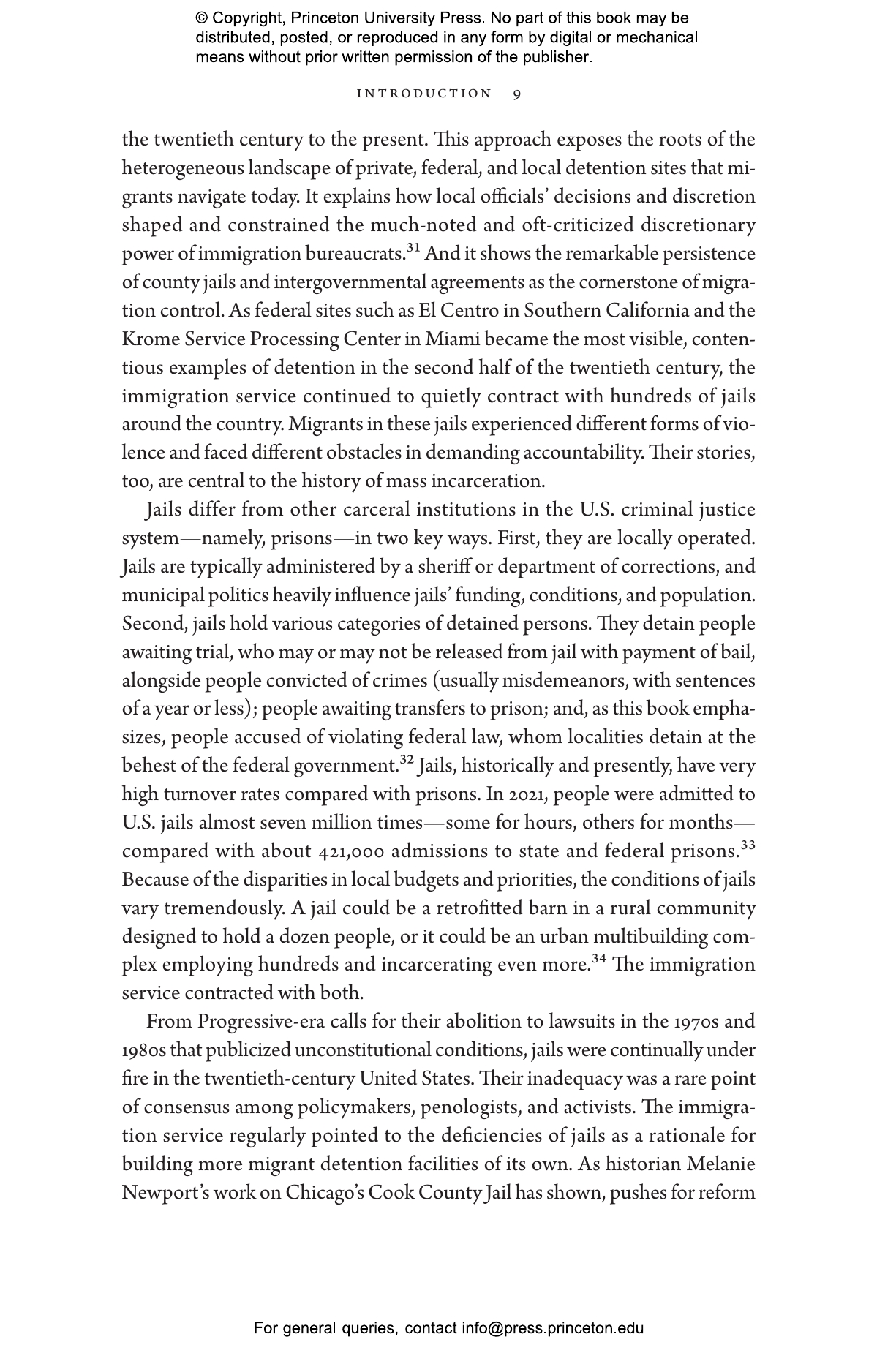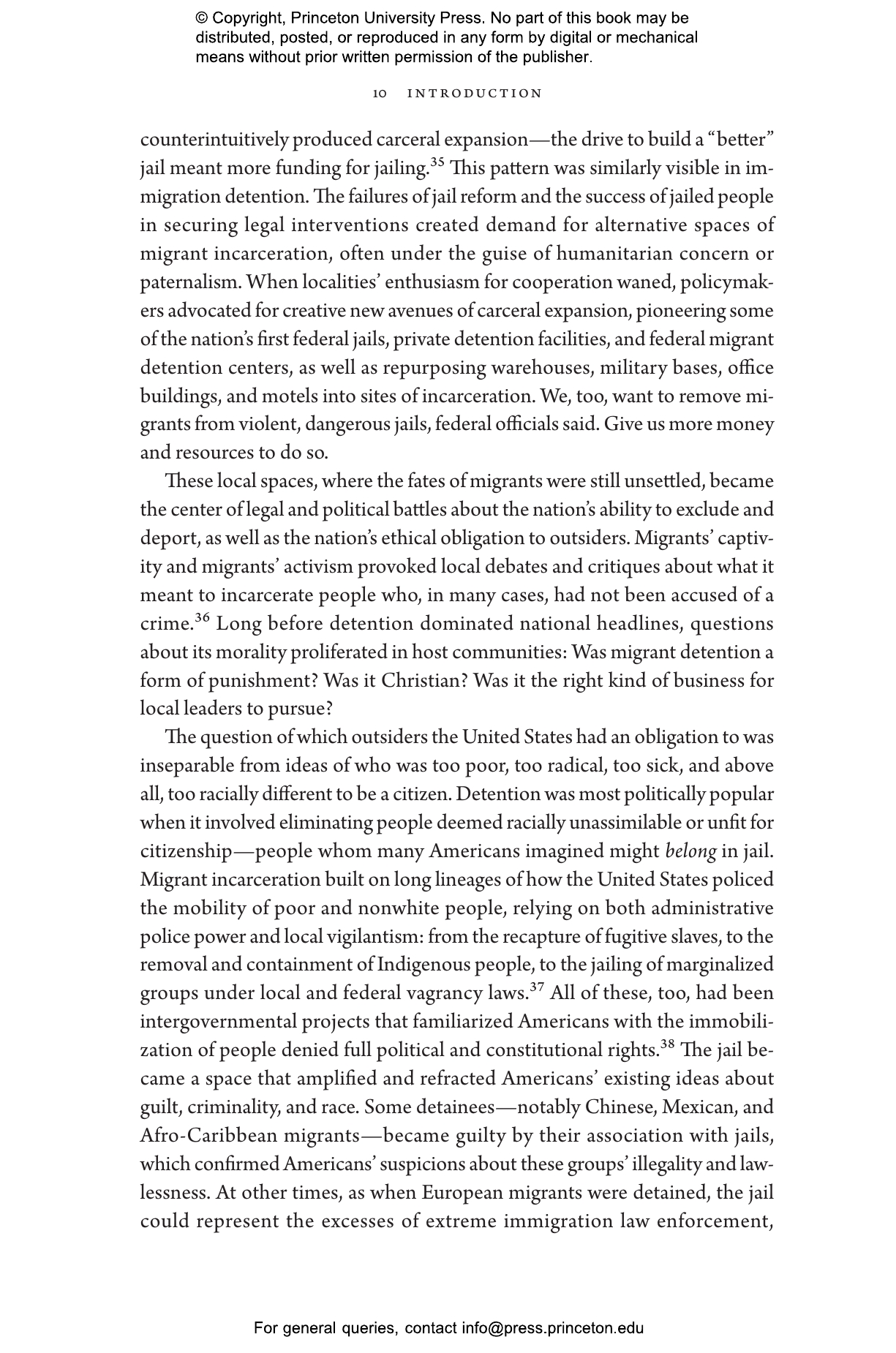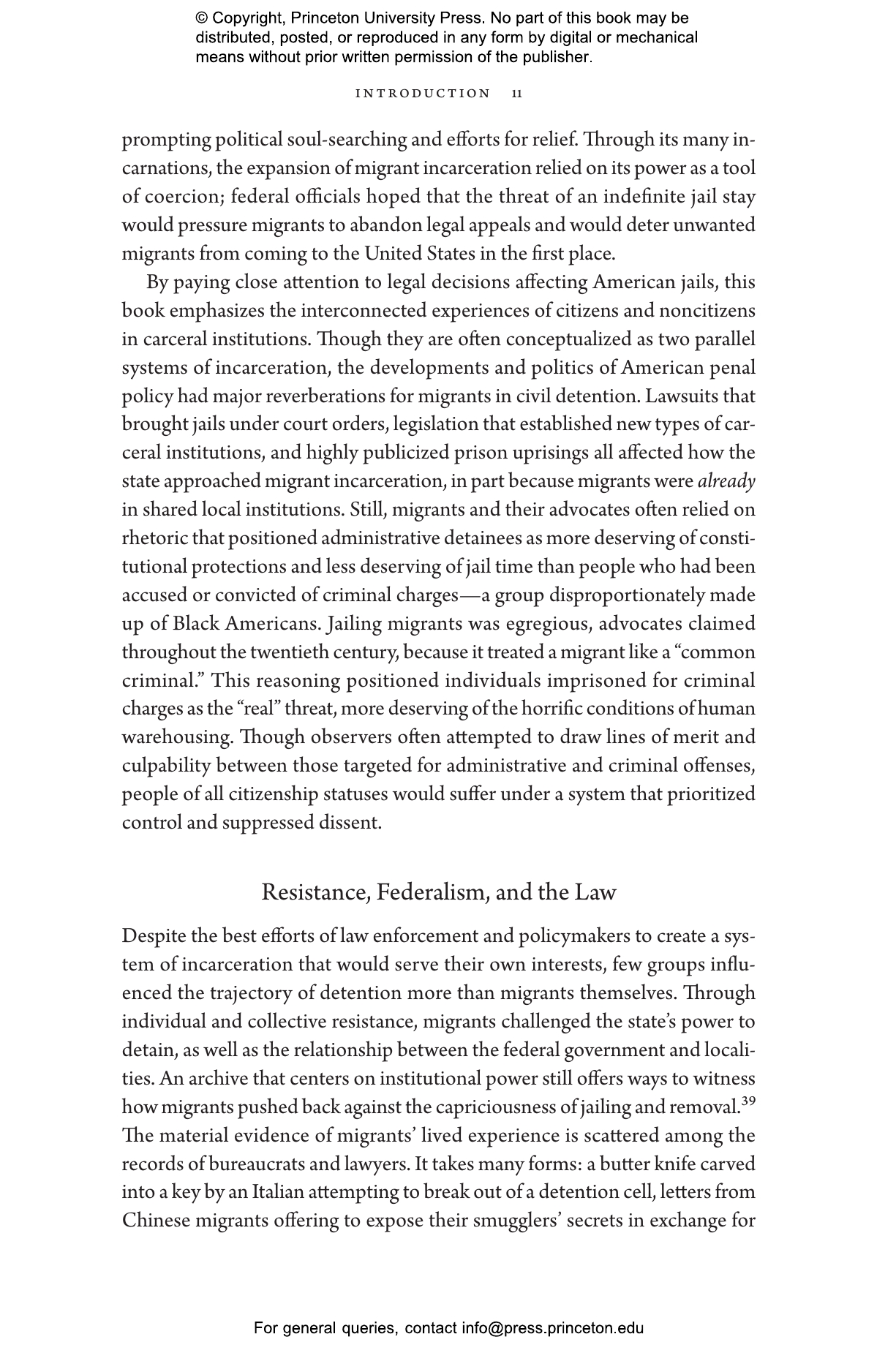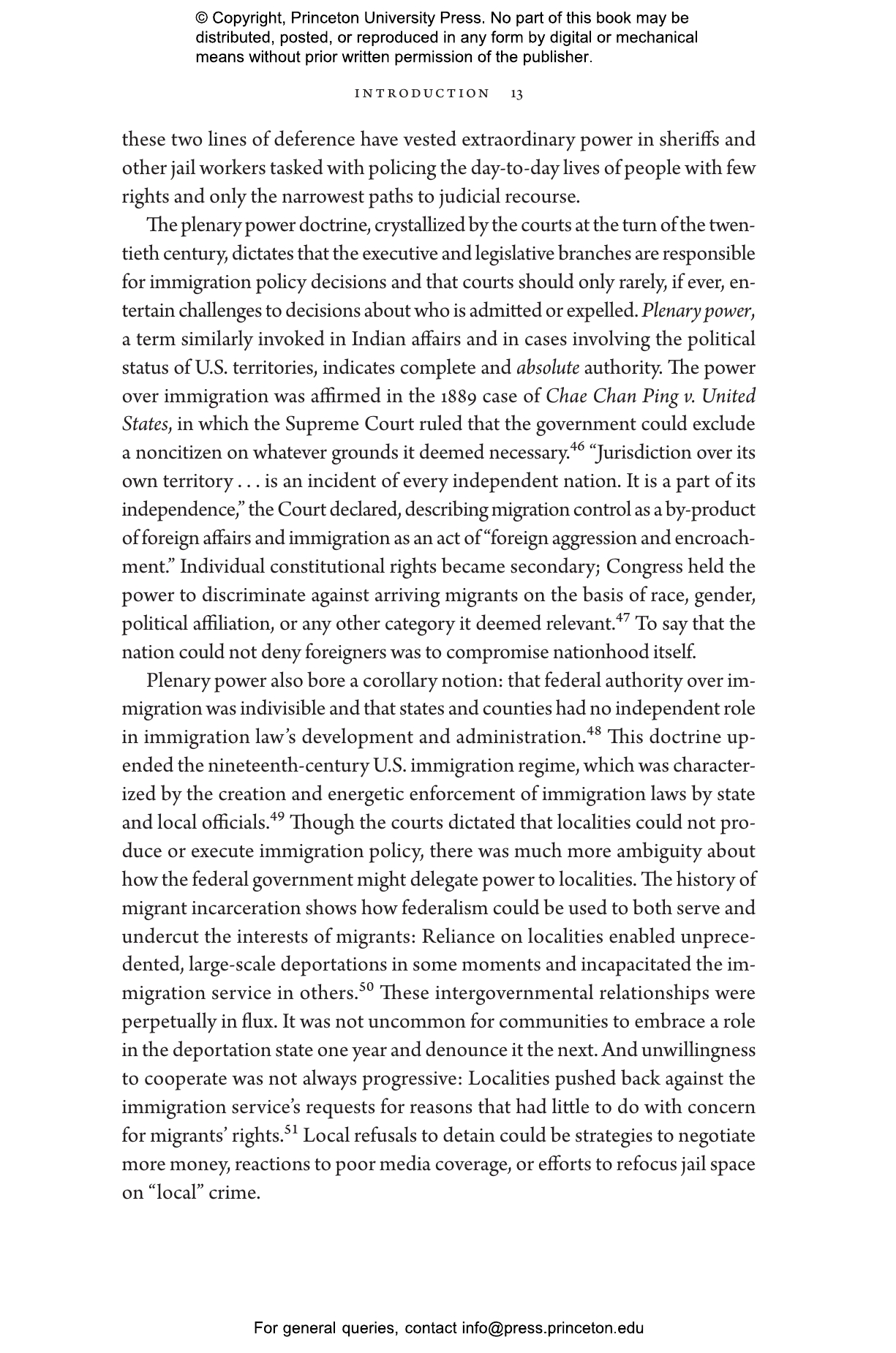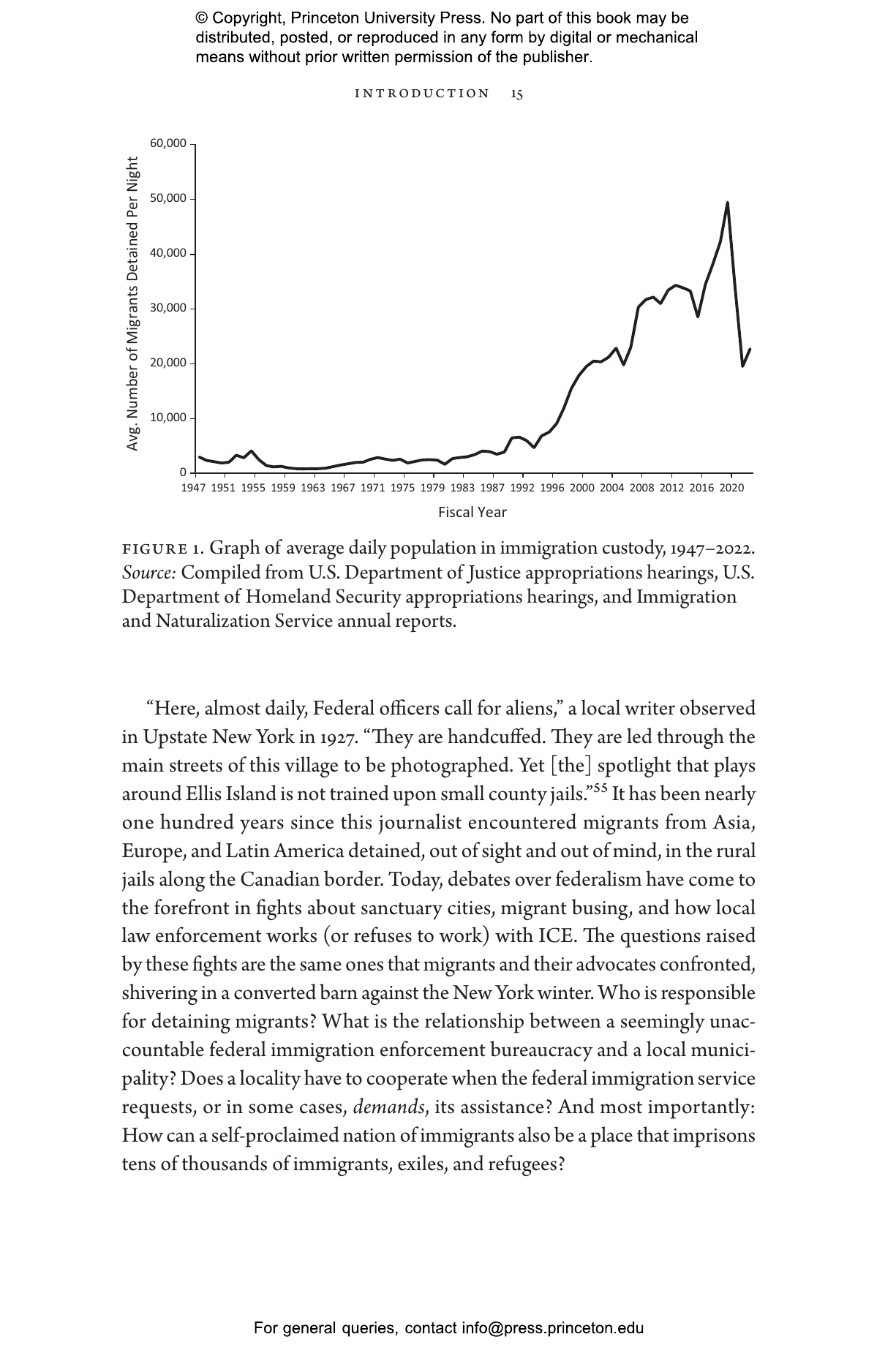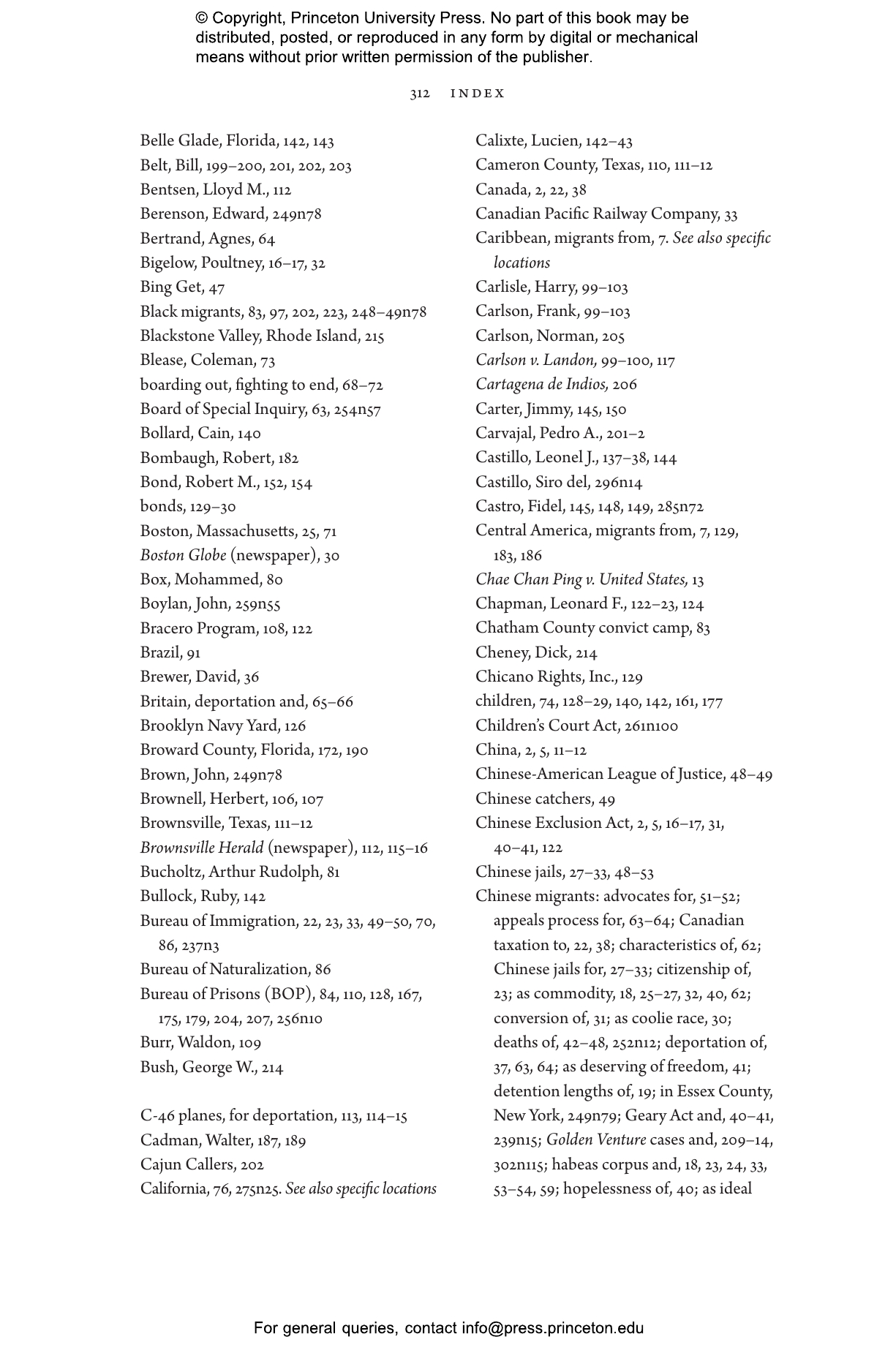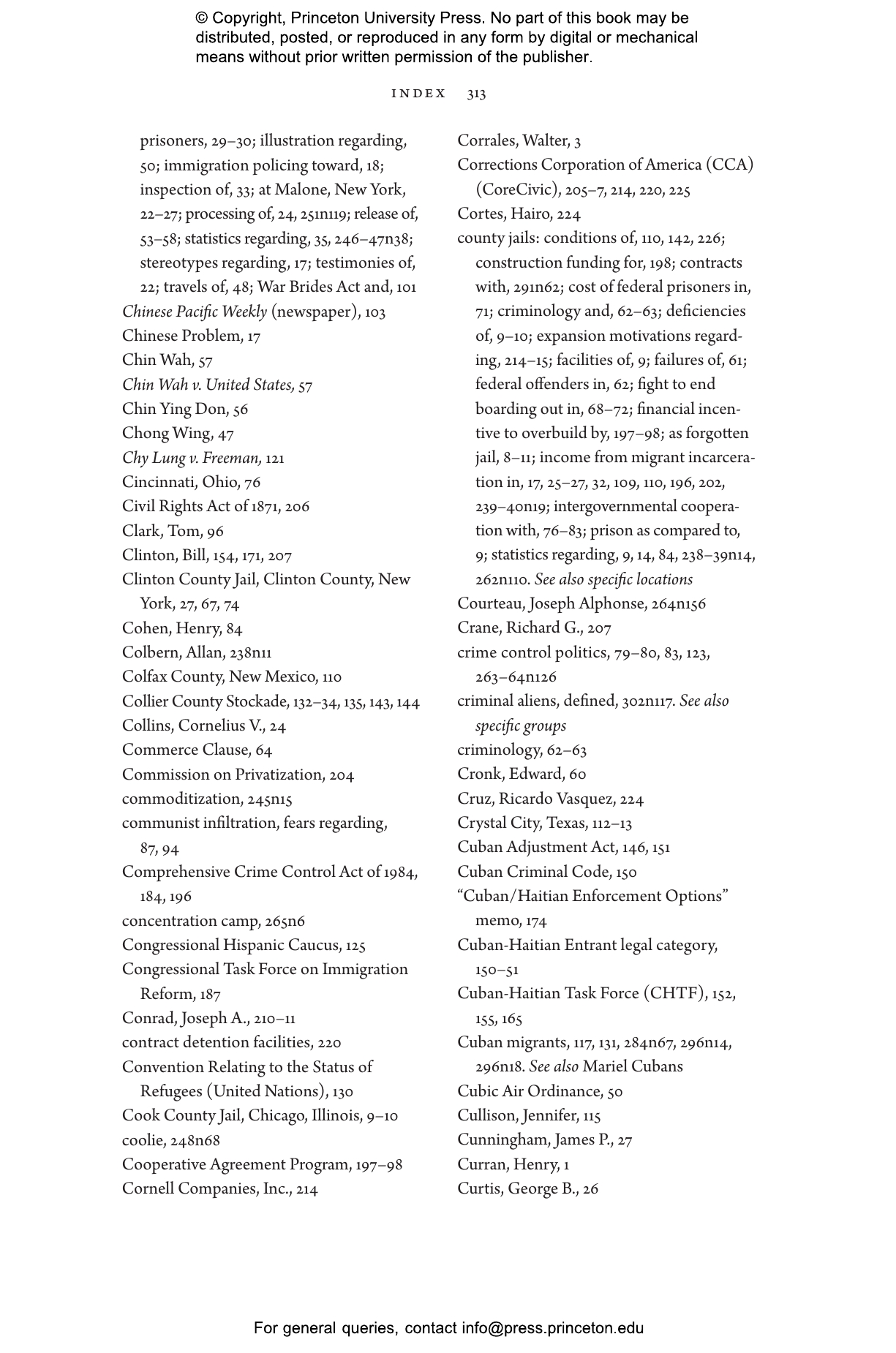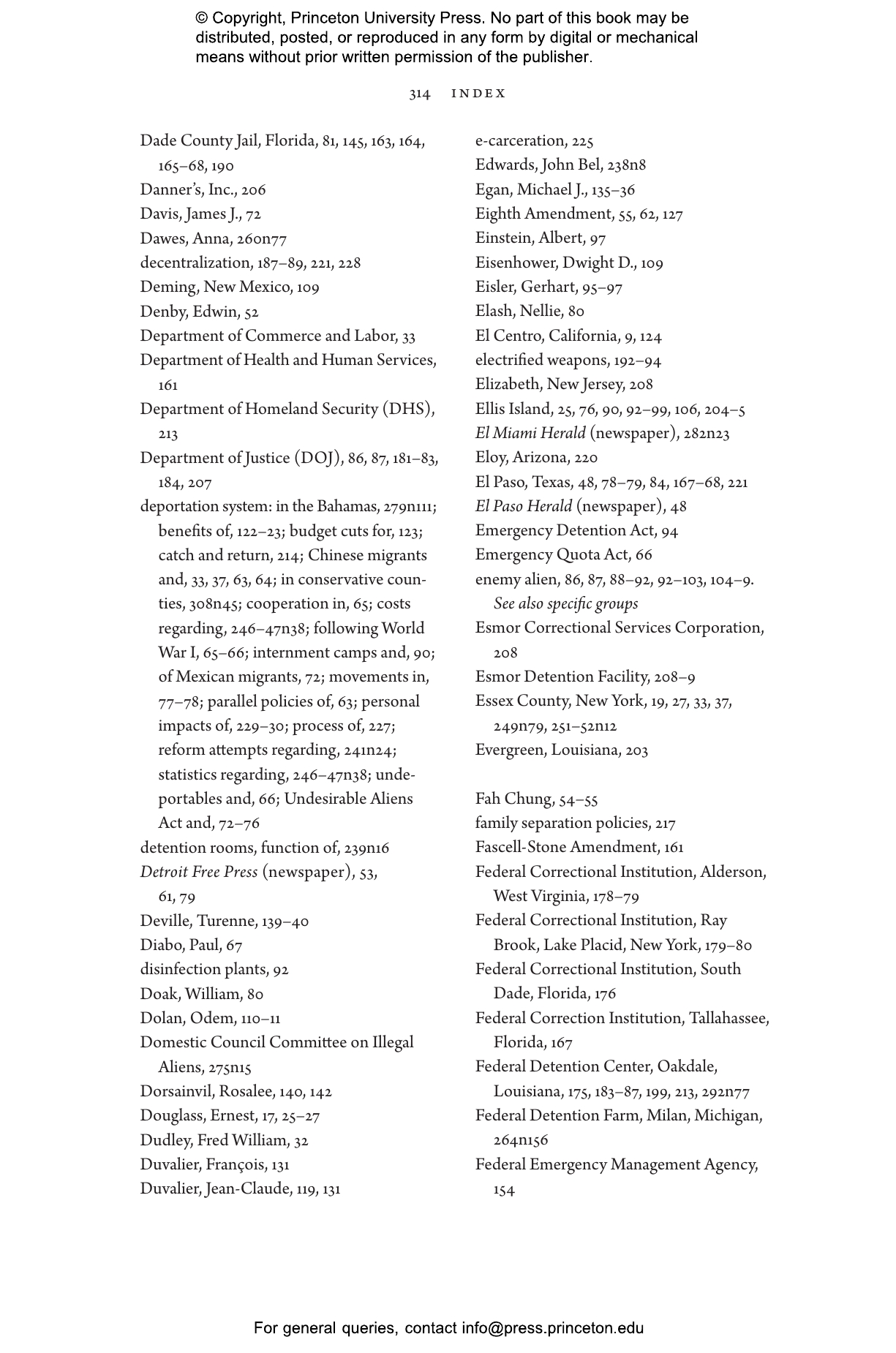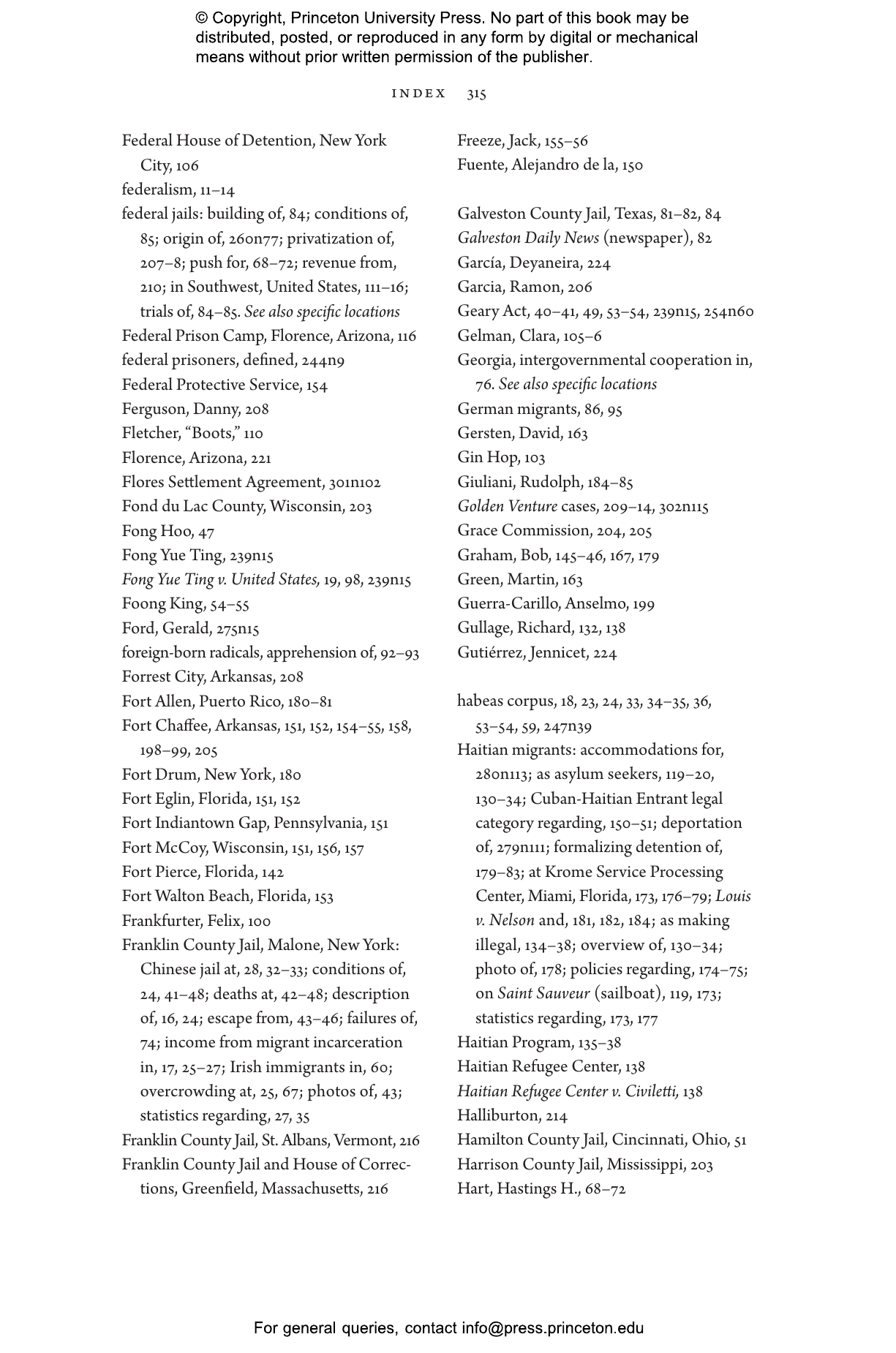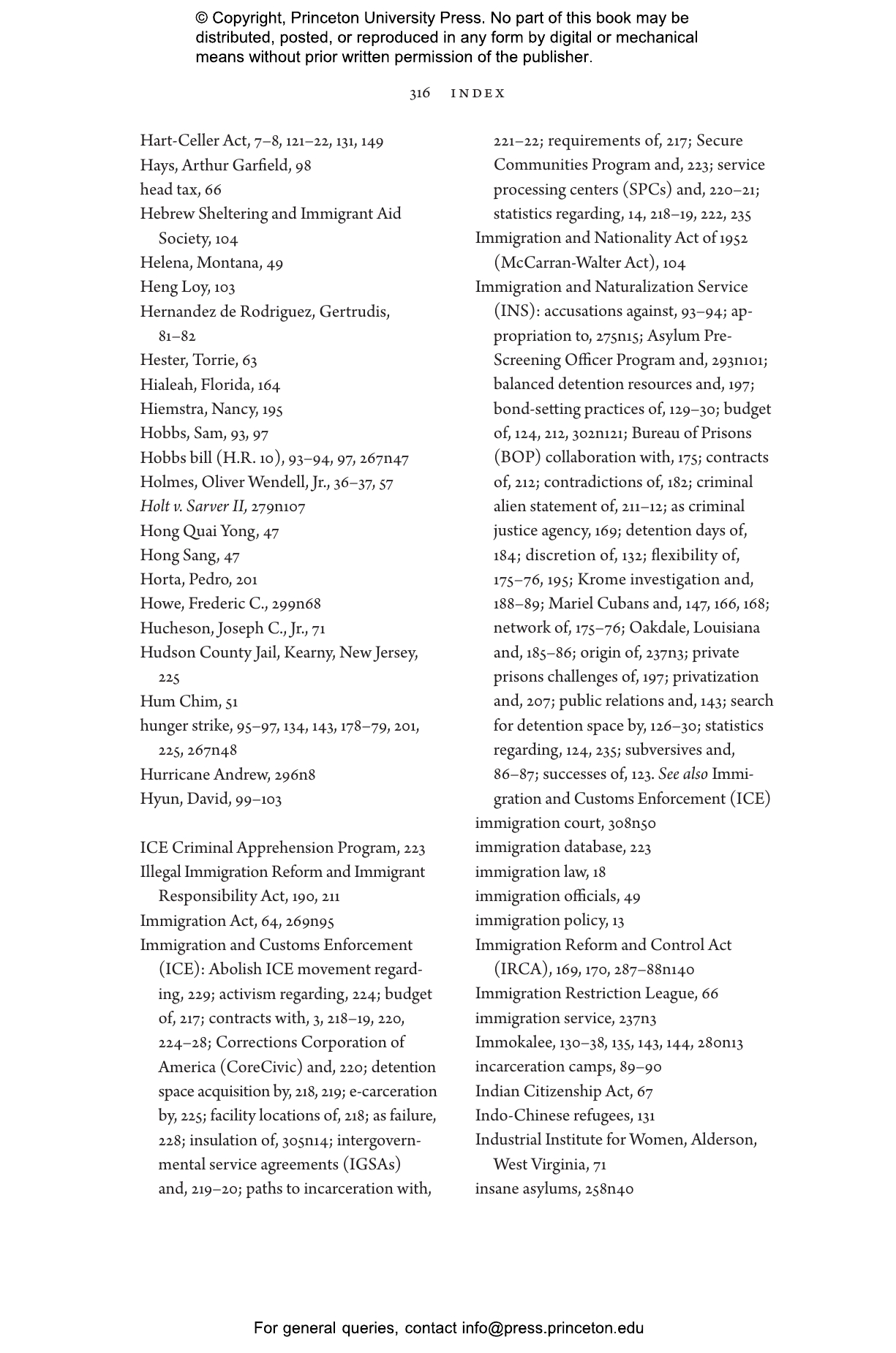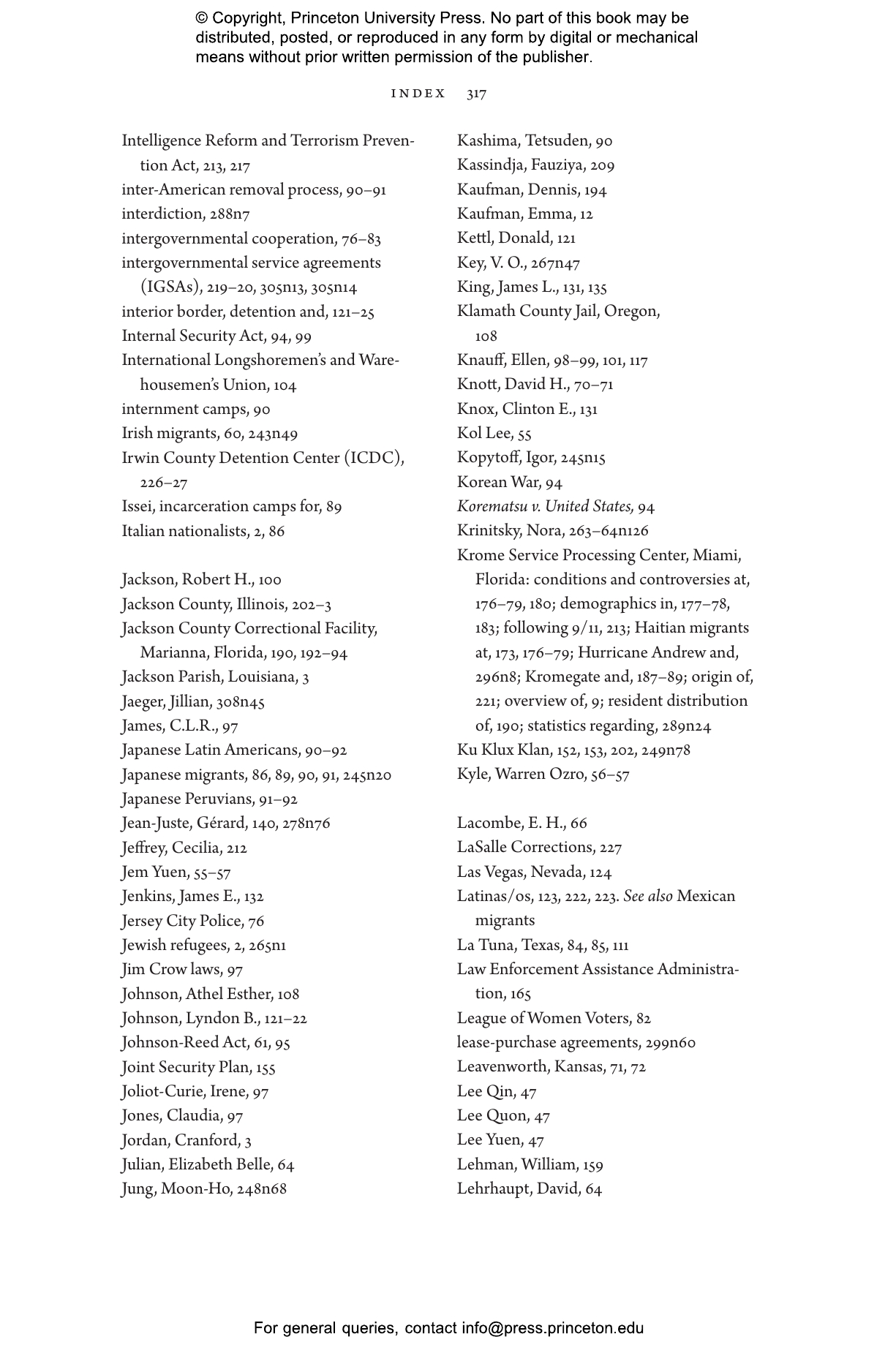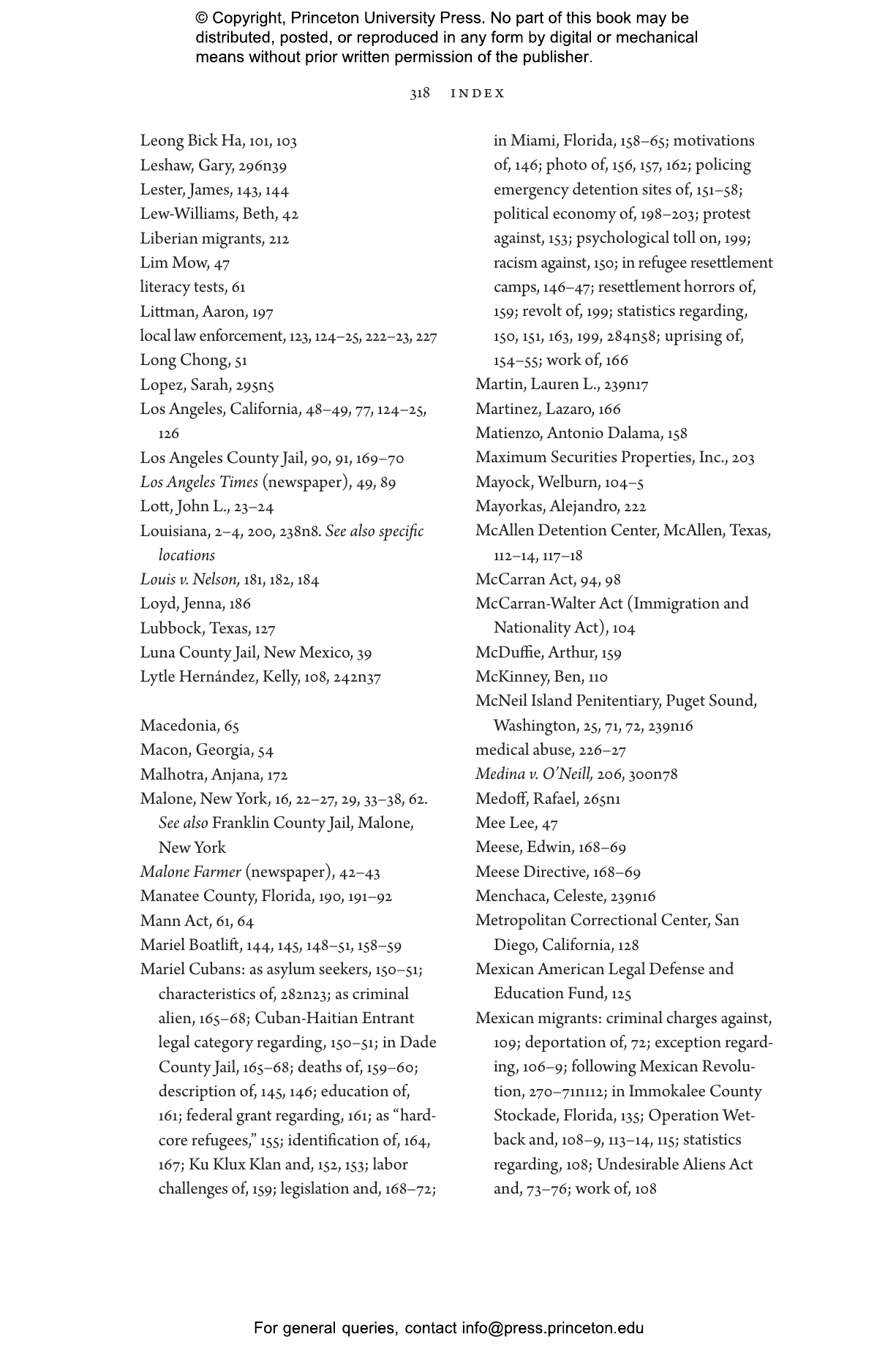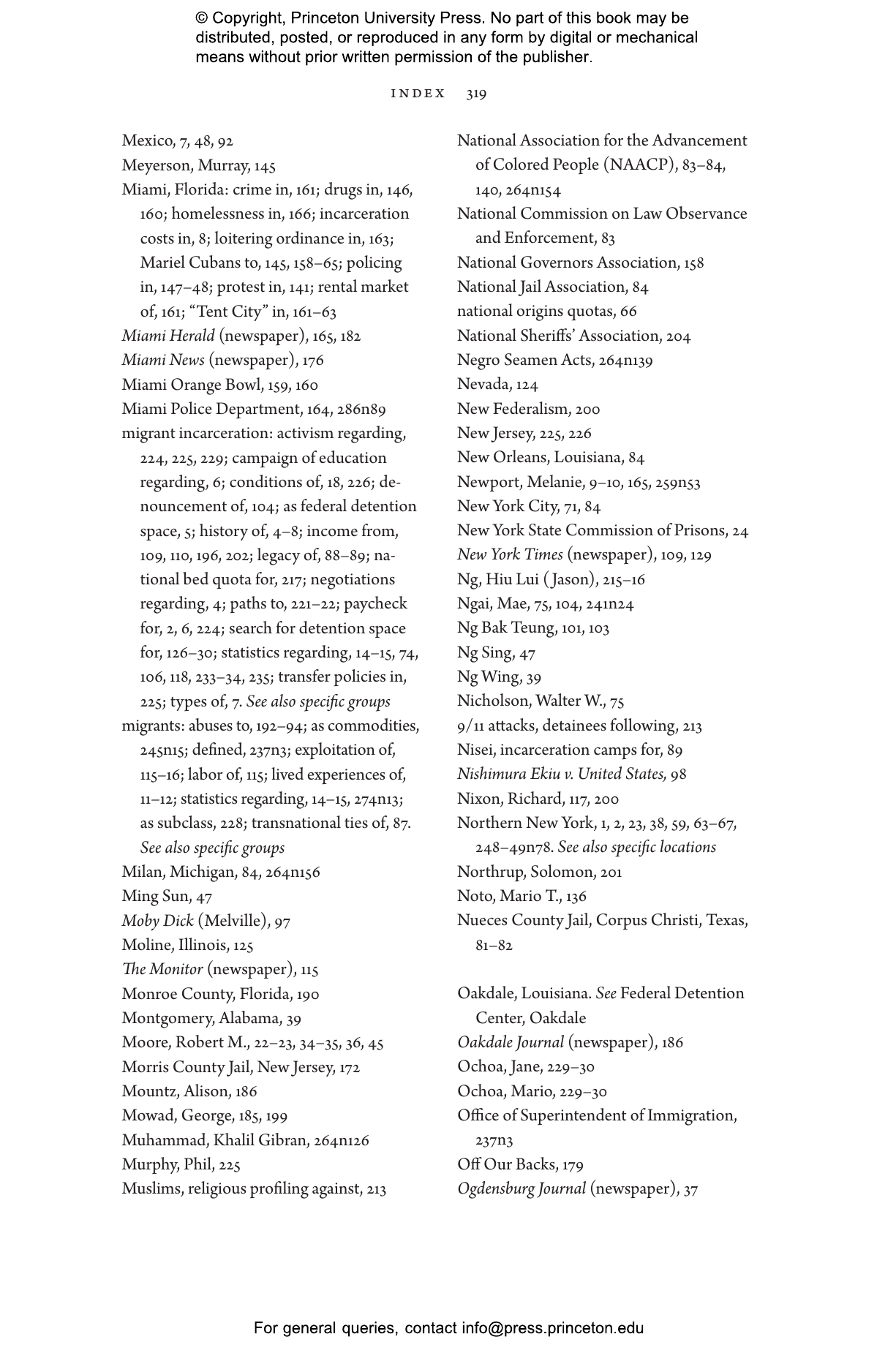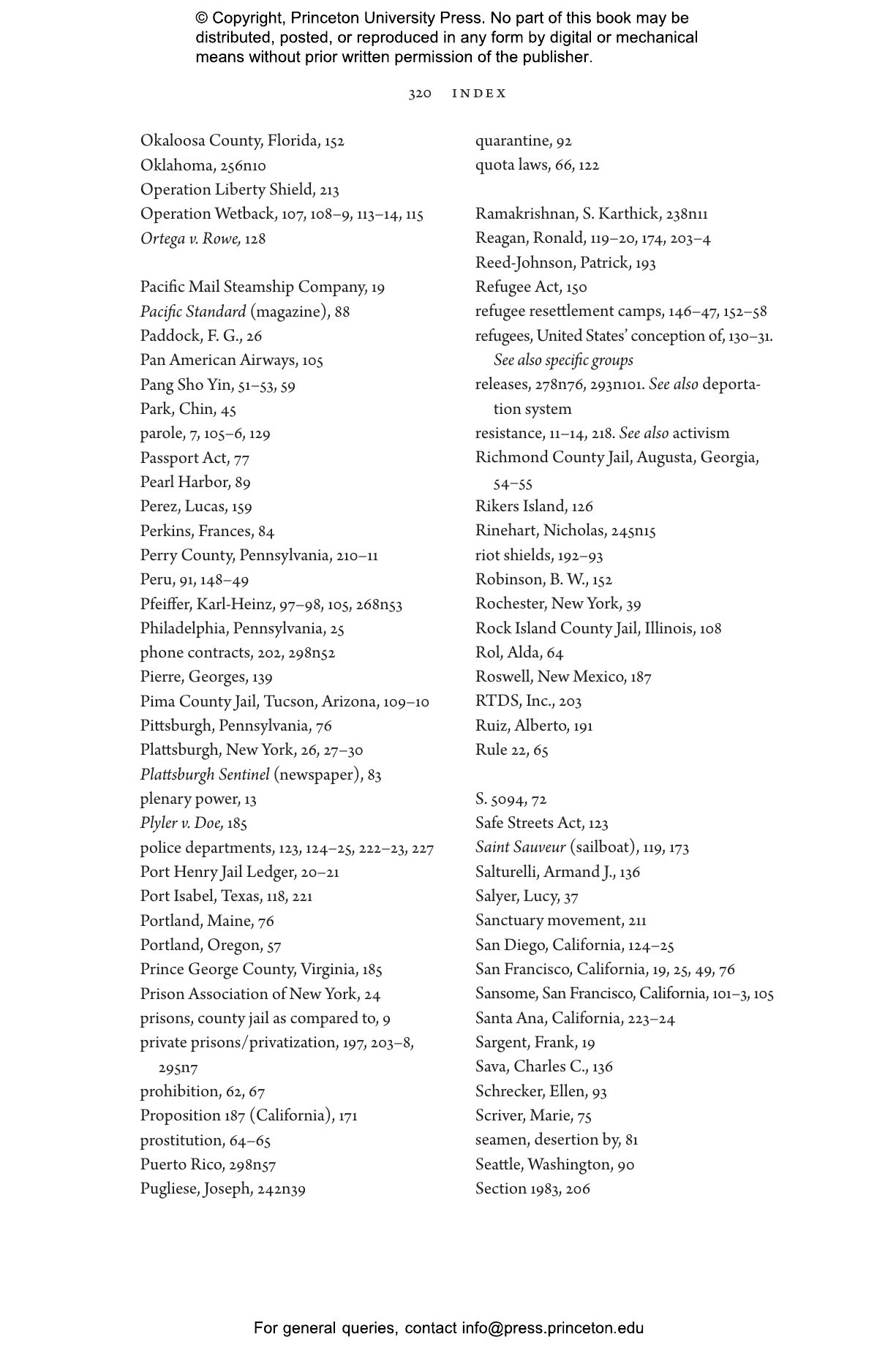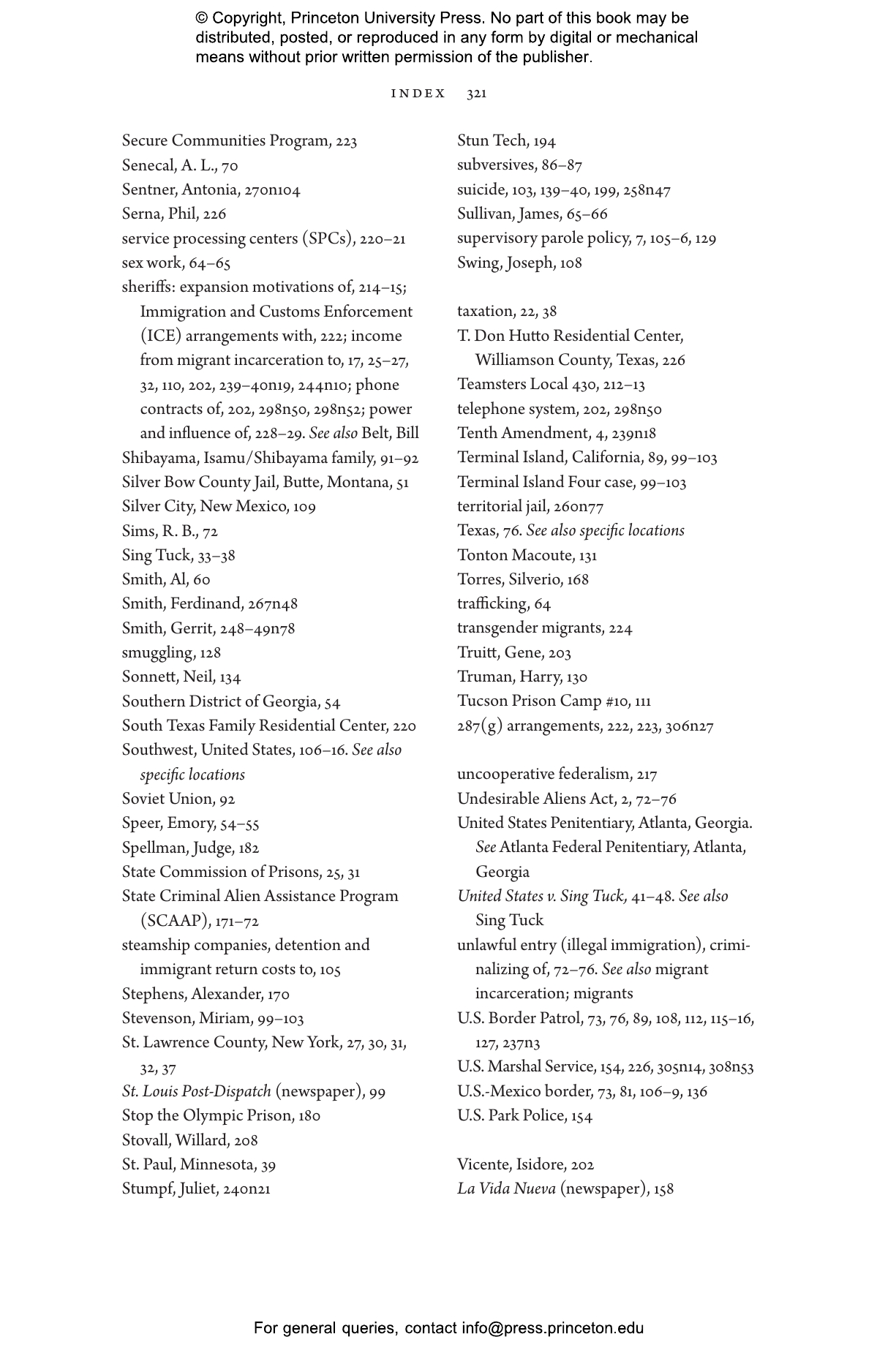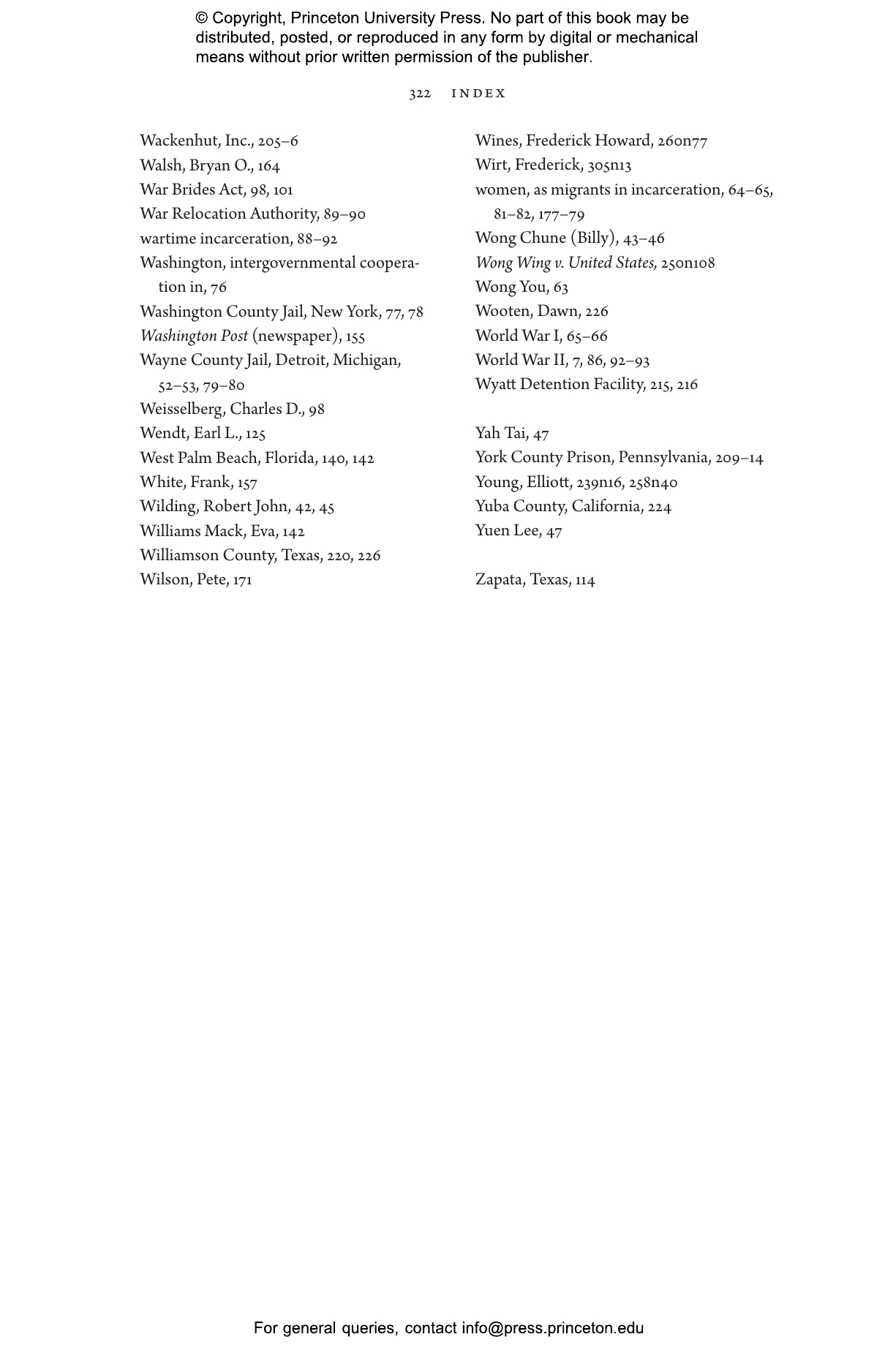Today, U.S. Immigration & Customs Enforcement (ICE) detains an average of 37,000 migrants each night. To do so, they rely on, and pay for, the use of hundreds of local jails. But this is nothing new: the federal government has been detaining migrants in city and county jails for more than 100 years. In The Migrant’s Jail, Brianna Nofil examines how a century of political, ideological, and economic exchange between the U.S. immigration bureaucracy and the criminal justice system gave rise to the world’s largest system of migrant incarceration. Migrant detention is not simply an outgrowth of mass incarceration; rather, it has propelled carceral state–building and fostered intergovernmental policing efforts since the turn of the twentieth century.
From the incarceration of Chinese migrants in New York in the 1900s and 1910s to the jailing of Caribbean refugees in Gulf South lockups of the 1980s and 1990s, federal immigration authorities provided communities with a cash windfall that they used to cut taxes, reward local officials, and build bigger jails—which they then had incentive to fill. Trapped in America’s patchwork detention networks, migrants turned to courts, embassies, and the media to challenge the cruel paradox of “administrative imprisonment.” Drawing on immigration records, affidavits, protest letters, and a variety of local sources, Nofil excavates the web of political negotiations, financial deals, and legal precedents that allows the United States to incarcerate migrants with little accountability and devastating consequences.
Brianna Nofil is assistant professor of history at William & Mary.
"Compelling. . . . An insightful and alarming history of the nation’s failures in detaining and deporting migrants."—Kirkus
“A brilliant, often surprising book that forever changed the way I think about immigration detention and the rise of mass incarceration. Brianna Nofil takes us inside local jails, federal lockups, for-profit prisons, government agencies, courtrooms, and the halls of Congress to reveal how the United States built the largest migrant detention system in the world during the past century. Thanks to her painstaking research in archives scattered across the country, Nofil comes with receipts.”—Adam Goodman, author of The Deportation Machine: America's Long History of Expelling Immigrants
“Brianna Nofil has crafted an important work to which considerable scholarly and general attention should be paid. This is a clear-eyed, well-researched, granular, and impressively wide-ranging work of historical excavation and politico-legal critique. Its exploration of the deep roots and problematic recent expansion of government—and increasingly private, profit-based—mass detention of noncitizens in the United States should inform all future discussions of these and many related issues.”—Daniel Kanstroom, author of Aftermath: Deportation Law and the New American Diaspora
"A crucial intervention in the history of immigrant detention and resistance. Nofil reveals how local jails came to form a sprawling, flexible, nationwide web of incarceration that continues to ensnare immigrants to this day.”—Beth Lew-Williams, Princeton University
“Brianna Nofil’s The Migrant’s Jail is a long-overdue look at this nation’s long history of immigration detention—one that not only shines needed new light on the insidious logics of this project, but also makes clear that the criminalization and incarceration of immigrants has always depended as much on the buy-in of local governments and the expansion of county jails as on any political machinations at the federal level. It is a truly indispensable read.”—Heather Ann Thompson, Pulitzer Prize–winning author of Blood in the Water: The Attica Uprising of 1971 and its Legacy



